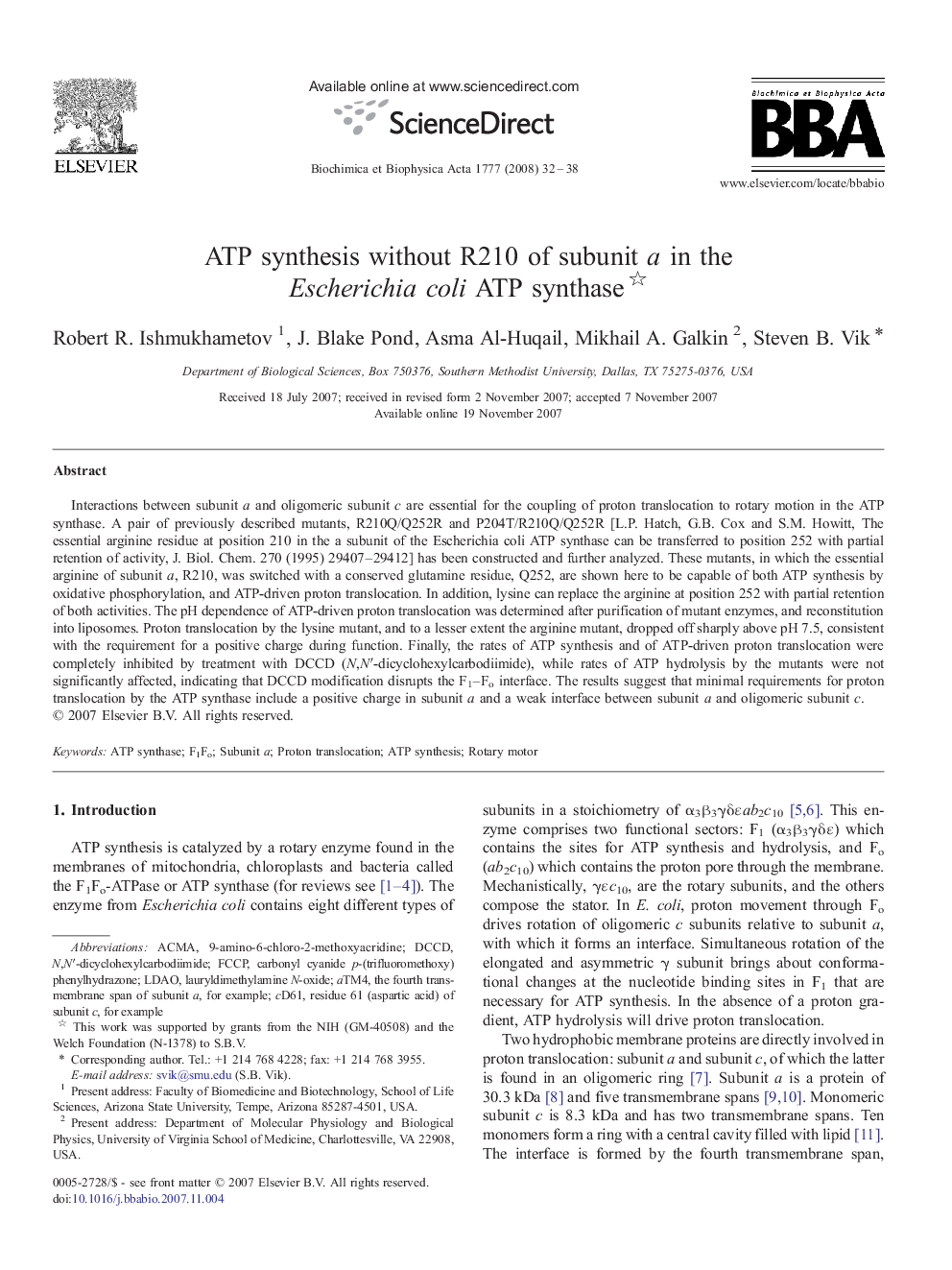| Article ID | Journal | Published Year | Pages | File Type |
|---|---|---|---|---|
| 1943429 | Biochimica et Biophysica Acta (BBA) - Bioenergetics | 2008 | 7 Pages |
Interactions between subunit a and oligomeric subunit c are essential for the coupling of proton translocation to rotary motion in the ATP synthase. A pair of previously described mutants, R210Q/Q252R and P204T/R210Q/Q252R [L.P. Hatch, G.B. Cox and S.M. Howitt, The essential arginine residue at position 210 in the a subunit of the Escherichia coli ATP synthase can be transferred to position 252 with partial retention of activity, J. Biol. Chem. 270 (1995) 29407–29412] has been constructed and further analyzed. These mutants, in which the essential arginine of subunit a, R210, was switched with a conserved glutamine residue, Q252, are shown here to be capable of both ATP synthesis by oxidative phosphorylation, and ATP-driven proton translocation. In addition, lysine can replace the arginine at position 252 with partial retention of both activities. The pH dependence of ATP-driven proton translocation was determined after purification of mutant enzymes, and reconstitution into liposomes. Proton translocation by the lysine mutant, and to a lesser extent the arginine mutant, dropped off sharply above pH 7.5, consistent with the requirement for a positive charge during function. Finally, the rates of ATP synthesis and of ATP-driven proton translocation were completely inhibited by treatment with DCCD (N,N′-dicyclohexylcarbodiimide), while rates of ATP hydrolysis by the mutants were not significantly affected, indicating that DCCD modification disrupts the F1–Fo interface. The results suggest that minimal requirements for proton translocation by the ATP synthase include a positive charge in subunit a and a weak interface between subunit a and oligomeric subunit c.
